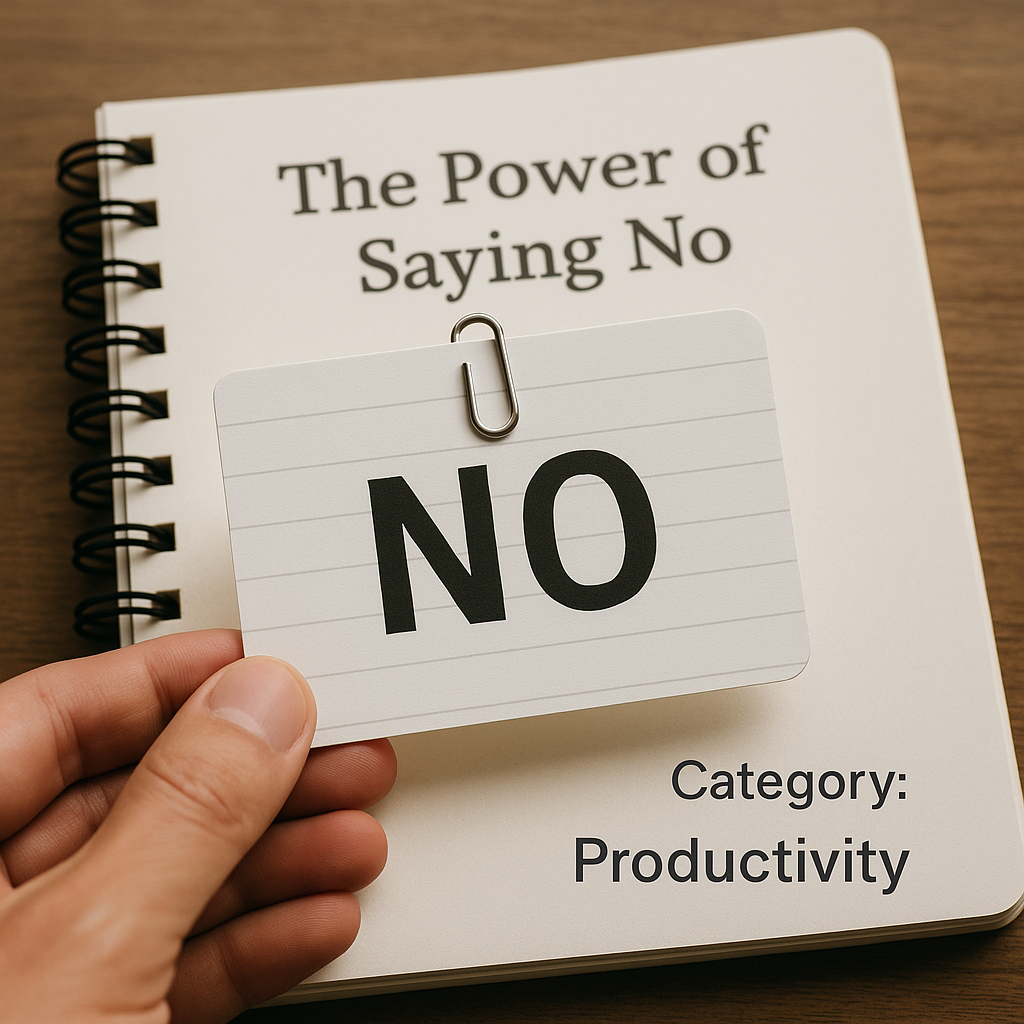Many people struggle with saying “no.” We fear disappointing others, missing out, or appearing selfish. But constantly saying “yes” to everything can drain your energy, derail your goals, and lead to burnout.
In reality, learning to say “no” is one of the most powerful skills for productivity, self-respect, and mental well-being.
In this article, you’ll discover how to set healthy boundaries and say “no” with confidence and clarity.
Why Saying “Yes” All the Time Hurts You
When you agree to everything, you often:
- Overcommit and feel overwhelmed
- Say yes to things that don’t align with your goals
- Sacrifice your rest, time, or well-being
- Build resentment toward others or yourself
- Delay your own priorities
Every “yes” is a tradeoff—often at the cost of your own needs or focus.
The Truth About Boundaries
Boundaries are not about rejecting people. They’re about honoring your values, time, and energy.
Healthy boundaries:
- Help you stay aligned with your priorities
- Build mutual respect in relationships
- Reduce guilt and emotional exhaustion
- Make space for what really matters
Saying “no” isn’t a rejection—it’s an affirmation of your direction.
1. Get Clear on What You Want to Protect
Before you can set boundaries, you need clarity. Ask:
- What are my top priorities right now?
- What types of requests distract me from them?
- Where do I feel resentment or burnout?
Boundaries are easier to enforce when they’re tied to your purpose.
2. Use Simple, Respectful Language
You don’t owe long explanations. A polite, firm “no” is enough.
Examples:
- “I appreciate the offer, but I can’t take that on right now.”
- “Thanks for thinking of me, but I need to focus on my current priorities.”
- “I’m honored you asked, but I have to say no to protect my schedule.”
Practice saying these out loud so you feel more confident when the moment comes.
3. Delay Your Response When Needed
You don’t have to answer on the spot. If you feel pressured:
- Say, “Let me think about it and get back to you.”
- Give yourself space to consider your bandwidth and goals
- Then reply with a clear yes or no—without guilt
A short pause can prevent a long commitment you’ll regret.
4. Expect Discomfort (But Don’t Let It Stop You)
Saying no might feel awkward—especially if you’re a people-pleaser. But discomfort doesn’t mean you’re doing something wrong.
You may face:
- Guilt
- Pushback
- Fear of conflict
Remind yourself: protecting your energy allows you to show up better for the things and people that matter most.
5. Create Default Phrases or Policies
Make “no” easier by having go-to boundaries:
- “I don’t take meetings before 10 a.m.”
- “I dedicate Sundays to family time.”
- “I limit volunteer work to one project per quarter.”
This shifts the conversation from personal rejection to established practice.
6. Celebrate Your Wins
Every time you say no to the wrong thing, you say yes to the right one. Celebrate:
- The mental clarity it creates
- The time it frees up
- The confidence you build
Track how your “nos” are helping you grow.
Final Thought: Saying “No” Is a Form of Self-Respect
You are not responsible for managing everyone’s expectations. You are responsible for your time, your focus, and your well-being.
The next time you’re tempted to say “yes” out of guilt or fear, pause and ask:
Does this align with the life I’m trying to create?
If not, give yourself permission to say “no”—and mean it.

